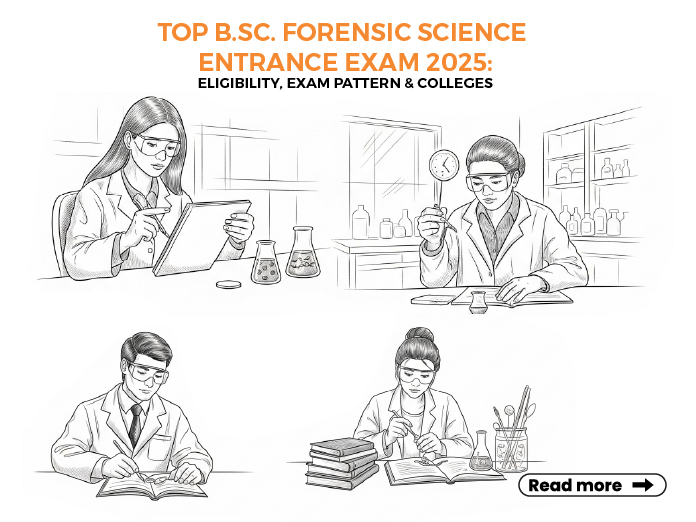What is forensic science? In simple terms, it is the use of scientific methods and techniques to solve crimes. Forensic science turns clues into evidence. It connects science with the law.
In modern-day forensic investigations, forensic science plays a crucial role. It helps law enforcement identify suspects, confirm facts, and bring justice. From DNA to fingerprints, science has become a detective’s most trusted tool.
Ever wondered how experts solve crimes using science? Let’s uncover the tools, techniques, and technologies used in modern forensic labs that make this possible.
The Evolution of Forensic Science
In the past, forensic science relied on basic observations. Investigators used physical signs, witness accounts, and simple tools. While effective then, it lacked the precision needed for today’s complex crimes.
Today, forensic science uses advanced techniques. Computer systems, automated machines, and AI have changed everything. Investigations now happen faster, with more accurate results. A single hair, fingerprint, or even a mobile phone record can close a case.
Emerging technologies have also increased the scope of forensics. Now, scientists can detect invisible clues and recreate crime scenes with digital tools. This evolution continues, and with each advancement, justice gets closer to the truth.
Inside a Modern Forensic Lab: What You’ll Find?
Modern forensic lab equipment powers most criminal investigations. These labs house a range of high-tech tools designed to analyse evidence in great detail.
You’ll find instruments like:
- Gas Chromatographs
- DNA Sequencers
- High-powered Microscopes
- Spectrophotometers
- Digital Forensics Workstations
Each tool serves a purpose. Some detect substances in blood. Others compare fibres or track digital activity. These tools work together to provide a complete picture of the crime.
With this equipment, forensic labs have transformed how investigators handle crime scenes. Evidence that was once overlooked now becomes central to solving a case.
Forensic DNA Analysis: The Silent Witness
Forensic DNA analysis is one of the most reliable methods in crime solving. It uses a person’s unique genetic code to confirm identity. Even a small trace, like hair, saliva, or skin cells, can be enough.
This method has solved many cold cases. For example, in the UK, DNA evidence helped solve the 1988 murder of Melanie Road. The suspect was identified nearly 30 years later using a relative’s DNA.
Forensic DNA analysis keeps improving. Scientists are now working on faster tests and portable DNA devices. Soon, investigators might analyse DNA directly at crime scenes. This “silent witness” continues to speak louder in courts.
Fingerprint Identification Systems: Unique Clues
Fingerprint identification systems are another pillar of modern forensics. No two people have the same fingerprints. This makes them perfect for identifying suspects.
These systems scan, compare, and match fingerprints from crime scenes with existing databases. Automated Fingerprint Identification Systems (AFIS) do this within seconds.
However, there are limits. Poor-quality prints or partial fingerprints can make matching difficult. But despite these limits, fingerprints remain strong evidence in court.
They not only confirm presence but also connect individuals to objects and locations. Forensic teams rely on fingerprint identification systems to unlock these unique clues.
Forensic Microscopes and Tools: Looking Closer
Forensic microscopes and tools reveal what the naked eye cannot see. They help investigators examine hair strands, fibres, dust, paint, and more.
Types of forensic microscopes include:
- Comparison Microscopes
- Electron Microscopes
- Polarised Light Microscopes
Each type serves a special function. For instance, comparison microscopes match bullets or fibres. Electron microscopes offer extreme magnification to detect minute traces.
These tools uncover hidden stories. A single fibre can prove a connection between a suspect and a victim. With forensic microscopes and tools, scientists look closer and find the truth in the tiniest details.
Digital Forensics Tools: Tracing the Invisible
As crimes move online, digital forensics tools become more important. These tools investigate cybercrimes, frauds, and digital footprints.
Some common digital forensics tools include:
- EnCase
- FTK (Forensic Toolkit)
- Cellebrite for mobile data
- X-Ways Forensics
These tools recover deleted files, extract metadata, and trace online activities. Mobile forensics tracks calls, messages, and location data. Email headers and system logs also become vital pieces of digital evidence.
With rising cyber threats, the need for digital forensics experts is growing. Tracing the invisible is no longer an option, it’s a necessity.
Toxicology Screening in Forensics: Hidden Poisons
Toxicology screening in forensics detects harmful chemicals in the body. These include drugs, alcohol, poisons, and gases.
Scientists use methods like:
- Gas Chromatography
- Mass Spectrometry
- Immunoassay Screening
These tests help determine the cause of death, detect drug use, or confirm poisoning. Toxicology is key in postmortem analysis. It helps explain sudden deaths, overdoses, and even impaired driving cases.
Hidden poisons often go unnoticed. But with toxicology screening in forensics, the truth comes to light.
Ballistics Testing Equipment: Cracking Gun Crimes
Ballistics testing equipment studies firearms and ammunition. It matches bullets to the weapons they were fired.
Tools like:
- Comparison Microscopes
- Ballistic Gel
- 3D Imaging Systems
- Integrated Ballistic Identification System (IBIS)
These tools examine bullet striations, cartridge cases, and gunpowder residue. Investigators then link them back to a specific gun.
Ballistics testing helps determine the range, angle, and force of shots. In gun crimes, this information becomes critical. It can prove intent, sequence of fire, and even link multiple crimes to the same weapon.
Role of Technology in Forensic Science: Beyond the Lab
The role of technology in forensic science extends beyond lab walls. AI, machine learning, and automation are changing how investigations happen.
AI scans thousands of records for patterns. Machine learning improves fingerprint and facial recognition. Drones capture aerial views of crime scenes. Automation speeds up lab tests.
However, these advancements bring ethical questions. Can AI make mistakes? What about privacy concerns?
Despite these challenges, technology helps forensic experts work smarter and faster. The future of forensic science lies in blending human expertise with smart machines.
Conclusion
Forensic science bridges the gap between crime and justice through evidence-based investigation. It combines biology, chemistry, physics, and technology to uncover the truth behind every case. With tools like DNA analysis, digital forensics, and ballistics, professionals can solve even the most complex crimes.
At Lovely Professional University, we prepare students for this exciting world. Our modern labs, expert faculty, and practical learning approach give you the tools to succeed. If you’re passionate about science and justice, now is the time to explore a career in forensic science.
Start your journey today with one of the top forensic science programmes in India. Join LPU and be a part of the future of investigation.














